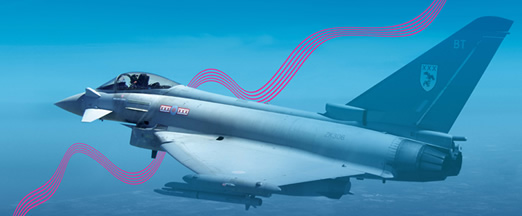The Royal International Air Tattoo – or RIAT – is this weekend and will again feature two days of spectacular air displays, ranging from flypasts by the Battle of Britain Memorial Flight to stunning aerobatic and formation flying by teams from around the world.
The Air Tattoo Air Traffic unit is an all-volunteer team made up of civilian air traffic control (ATC) staff from airports around the country, many of whom are validated at airports where NATS provides the ATC.
 At the show it operates with Civil Aviation Authority (CAA) approval, and is closely monitored by the CAA.
At the show it operates with Civil Aviation Authority (CAA) approval, and is closely monitored by the CAA.
Part of the Air Tattoo Air Traffic operation is carried out by the Radar unit at nearby RAF Brize Norton, especially during the arrivals phase. Early in the year we meet our colleagues at Brize to collaborate in producing a comprehensive brief of the procedures to be used in the upcoming display.
Providing ATC at the Air Tattoo can be a very complex operation, with controllers using the experience they’ve gained from working in some of the busiest airports and airspace in the UK. A specially designed airspace structure must be implemented for the duration of the event, and this is where NATS’ expertise really comes into play to allow this fantastic show to run successfully year upon year.
In late June comes the ‘Longest Day’, when arrival and rehearsal slots are allocated to participating aircraft. With up to 200 participants to process, it’s easy to see where this day gets its name! Working with the Air Ops team and taking into account the complications of the aircraft parking plan, an arrival plot is eventually formulated to make sure everything runs smoothly.

NATS Air Traffic Controller Ian Revell who will be helping at RIAT this year.
The airfield at RAF Fairford opened for Air Tattoo operations on Wednesday. Thursday and Friday are, without doubt, the busiest arrival days. Even with good weather, the programme gets quite hectic because it’s important that rehearsals are done in their planned slots.
For a display team rehearsal this could mean up to 40 minutes where we can’t accept arrivals, so if an aircraft turns up late and with little fuel, things get interesting and Brize Norton may receive an unexpected visitor.
Friday is also ‘Corporate Day’, with the hospitality chalets buzzing with guests. As we have an audience, the focus of operation now moves into ‘display mode’. By early evening the majority of aircraft have arrived, and as we close the engineers take over, working long into the night to ensure aircraft are positioned correctly in the static park ready for the show weekend.
From an air traffic control viewpoint, the display days tend to be more predictable, because the flying display is programmed to the minute. Working closely with the Flying Display Director (FDD), the Air Traffic Team works hard to keep everything on time. Both the Air Traffic Team and the FDD liaise closely with the supervising Display Flying Committee, with a hotline phone to enable instant communication should anything go awry.
The Air Traffic Team is also responsible for alerting the Emergency Services in the event of incidents or accidents. The Emergency Desk in the tower is the focal point for all alerting action, whether it’s for a burst aircraft tyre or, on show days, a pet dog locked in a car.
The departure phase starts around 0900 on Monday. Before any aircraft can move, a massive clean-up of the airfield is carried out by Air Cadet Volunteers. The Engineers then take centre stage, ‘breaking down’ the static parks to allow aircraft to taxi from their parking positions.
The departure plot is worked out by the Flight Operations Team, which allocates slots to the aircraft based on requested time, parking position and any en-route restrictions.
The whole team now gets very busy, both at the Air Tattoo and at Brize, as up to 200 aircraft depart in under six hours in all directions and at all heights.
At the end of the day, the tower is ‘handed back’ to the sole USAF Controller present and Fairford reverts to its normal role – ready for next year’s show.

What we do at Fairford is completely different to what we do on a normal work day and being able to adapt the skills we have got to provide the same level of safety and professionalism as we would do with NATS is very fulfilling.
- Visit the official RIAT website
Comments
Please respect our commenting policy and guidelines when posting on this website.

